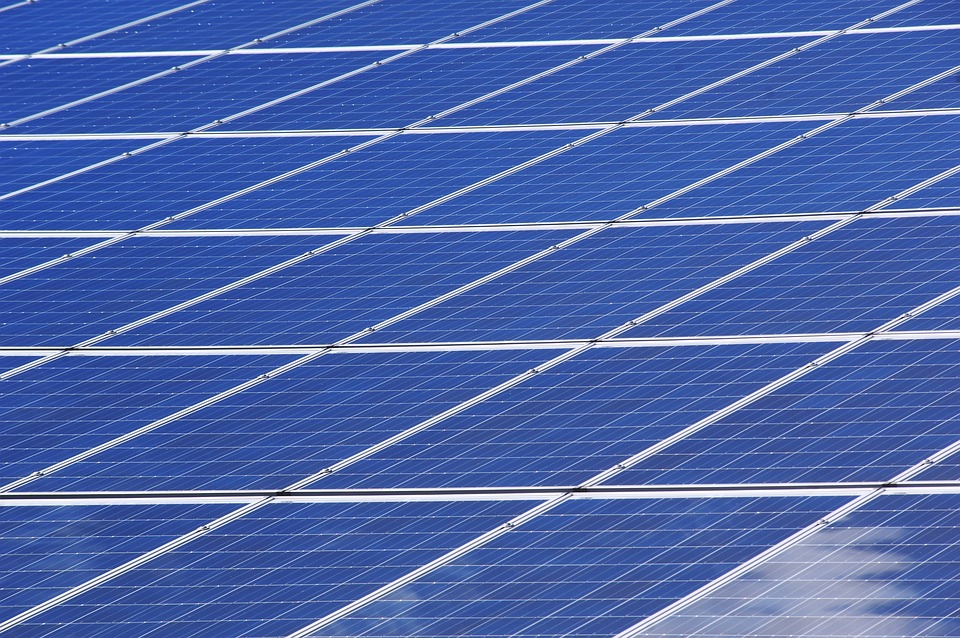Harnessing the Power of the Sun: Exploring the Advancements in Photovoltaic Systems
Introduction
As the world continues to battle with the detrimental effects of climate change, renewable energy sources have gained unparalleled significance. Among these, solar power has emerged as a leading contender in the race towards a greener future. Photovoltaic (PV) systems, which convert sunlight into electricity, have witnessed remarkable advancements in recent years. In this article, we will explore the evolving landscape of photovoltaic systems and the key advancements that are propelling solar power towards becoming a dominant energy source.
1. Increased Efficiency and Cost Reduction
The efficiency of photovoltaic systems has significantly improved over time. Earlier PV systems had average conversion efficiencies of around 5-10%. However, with advancements in technology, modern solar panels are achieving conversion efficiencies as high as 25%. This increase in efficiency has made solar power more viable and attractive for widespread adoption.
Additionally, PV system manufacturing costs have dramatically reduced over the years. Between 2010 and 2020, the average cost of solar panels decreased by around 90%. This cost reduction has made solar energy more affordable and accessible, attracting both homeowners and businesses to invest in photovoltaic systems.
2. Thin-Film and Perovskite Technologies
New materials and technologies are revolutionizing the photovoltaic industry. Thin-film solar cells, which utilize extremely thin semiconductor layers, offer flexibility and applications in various settings. They can be integrated into building materials, enabling solar power generation on a larger scale.
Perovskite solar cells have also gained attention due to their efficiency and cost-effectiveness. These cells are made using compounds with a perovskite crystal structure, allowing for higher conversion efficiencies and lower manufacturing costs compared to traditional silicon-based solar cells. While perovskite technology is still under development, it holds enormous potential for the future of solar energy.
3. Bifacial Panels and Tracking Systems
Bifacial solar panels are another advancement in photovoltaics. Unlike traditional solar panels, which only capture sunlight from one side, bifacial panels can absorb light from both sides. This allows them to generate electricity from direct sunlight as well as reflected light, thereby increasing overall energy output.
Moreover, tracking systems have been developed to optimize the performance of photovoltaic systems. These systems move solar panels to follow the sun’s position throughout the day, maximizing their exposure to sunlight. By tracking the sun, the panels can generate up to 25% more electricity compared to fixed-tilt systems, increasing their efficiency and energy production.
4. Integration with Energy Storage
The integration of photovoltaic systems with energy storage technologies is a major development in the solar power industry. As solar energy generation is dependent on sunlight availability, storing surplus energy for later use is crucial. With advancements in battery technology, it has become possible to store excess solar energy during the day and use it during periods of low sunlight or at night.
For instance, Tesla’s Powerwall is a popular energy storage solution that allows homeowners to store and utilize solar energy. These units can be charged during daytime when solar generation is high and discharged when sunlight is limited, ensuring a consistent and reliable source of power.
5. Global Impact and Future Outlook
The advancements in photovoltaic systems have had a significant impact on the global energy landscape. Solar power is now one of the fastest-growing renewable energy sources, contributing to the reduction of greenhouse gas emissions and combating climate change.
According to the International Energy Agency (IEA), from 2015 to 2020, the cumulative installed capacity of solar photovoltaic systems increased by over 600%. Additionally, solar power is expected to play a central role in achieving the sustainable development goal of universal access to affordable, reliable, and modern energy by 2030.
Conclusion
The advancements in photovoltaic systems have transformed solar power into a formidable contender in the global energy landscape. Through increased efficiency, cost reduction, the development of new materials and technologies, integration with energy storage, and a positive global impact, solar energy is on an upward trajectory towards becoming a dominant energy source.
As technology continues to improve and costs decrease, we can expect further innovations and widespread adoption of photovoltaic systems. The harnessing of solar power provides a viable pathway to a sustainable and greener future.


ivermectin for cov 19 – ivermectina 6 mg buy carbamazepine 200mg online cheap
cost isotretinoin 20mg – buy linezolid 600mg without prescription buy linezolid 600mg without prescription
amoxicillin usa – combivent usa combivent medication
buy zithromax 250mg sale – order nebivolol 20mg generic bystolic 5mg sale
buy omnacortil 5mg online – progesterone 100mg cheap buy progesterone 200mg pills
neurontin 800mg ca – itraconazole 100 mg canada cost itraconazole
order furosemide 100mg sale – buy piracetam generic order betnovate 20gm generic
doxycycline pills – order vibra-tabs buy glipizide 5mg for sale
clavulanate sale – nizoral for sale online order cymbalta 20mg generic
augmentin 1000mg usa – buy augmentin without prescription buy cymbalta paypal
order semaglutide 14 mg without prescription – rybelsus pills purchase cyproheptadine for sale
buy tadalafil 20mg online – order tadalafil 5mg generic cheap generic sildenafil
order viagra for sale – viagra mail order us tadalafil 20mg drug
cenforce 100mg pill – cenforce cost buy glucophage paypal
atorvastatin 80mg brand – atorvastatin cheap order lisinopril 5mg generic
how to get prilosec without a prescription – order tenormin 100mg sale atenolol us
depo-medrol sale – how to get lyrica without a prescription triamcinolone pills
order clarinex pill – loratadine 10mg cost buy priligy generic
order cytotec 200mcg pills – buy xenical pills order diltiazem 180mg pill
buy acyclovir 800mg online cheap – zovirax 800mg without prescription buy crestor sale
motilium for sale – flexeril over the counter flexeril 15mg cost
domperidone medication – cheap sumycin 500mg buy flexeril 15mg generic
warfarin 2mg canada – purchase cozaar online hyzaar medication
buy generic levaquin online – buy ranitidine 300mg generic buy ranitidine 150mg sale
buy nexium cheap – brand imitrex buy sumatriptan online
buy generic mobic 15mg – order tamsulosin online tamsulosin 0.4mg canada
buy ondansetron 8mg pill – cheap aldactone zocor canada
valtrex 500mg tablet – purchase valacyclovir online cheap forcan pills
Explora los mejores casinos en línea clasificados de 2025. Compara bonificaciones, selecciones de juegos y la confiabilidad de las principales plataformas para una experiencia de juego segura y gratificanteoferta de bono
modafinil 100mg sale provigil over the counter buy provigil 200mg generic modafinil 100mg pill buy modafinil 100mg purchase provigil online cheap modafinil 100mg sale
More content pieces like this would urge the интернет better.
This is the make of advise I recoup helpful.
order zithromax 250mg generic – purchase flagyl buy metronidazole 200mg pill
semaglutide sale – where can i buy rybelsus oral periactin 4mg
domperidone 10mg oral – order motilium 10mg generic buy flexeril sale
buy propranolol – inderal 20mg cost methotrexate canada
buy amoxil – combivent 100mcg canada combivent online
buy generic azithromycin for sale – order azithromycin nebivolol medication
augmentin 625mg tablet – atbioinfo buy ampicillin medication
buy esomeprazole 20mg without prescription – https://anexamate.com/ purchase nexium online
coumadin order online – https://coumamide.com/ losartan over the counter
mobic buy online – relieve pain order meloxicam 7.5mg pills
order prednisone 5mg pill – corticosteroid buy prednisone 40mg pills
buy cheap generic ed pills – fastedtotake free ed pills
amoxil over the counter – combamoxi order amoxil sale
order fluconazole 200mg online cheap – https://gpdifluca.com/# buy fluconazole online
buy cenforce no prescription – https://cenforcers.com/ cost cenforce
generic cialis 5mg – site tadalafil hong kong
price of cialis in pakistan – site overnight cialis
buy ranitidine 300mg for sale – https://aranitidine.com/ buy zantac 150mg online cheap
This is a topic which is virtually to my callousness… Diverse thanks! Exactly where can I lay one’s hands on the contact details an eye to questions? amoxil nombre generico
I am in truth happy to coup d’oeil at this blog posts which consists of tons of profitable facts, thanks object of providing such data. https://buyfastonl.com/isotretinoin.html
More posts like this would make the blogosphere more useful. https://ursxdol.com/augmentin-amoxiclav-pill/
Such a beneficial insight.
Thanks on putting this up. It’s understandably done. https://prohnrg.com/product/get-allopurinol-pills/
I’ll definitely return to read more.
The depth in this piece is remarkable.
The reconditeness in this ruined is exceptional. ou trouver du viagra ou cialis super active sans ordonnance
Thanks for publishing. It’s top quality.
This is the kind of writing I value most.
You’ve obviously researched well.
I found new insight from this.
More posts like this would make the online space better.
I discovered useful points from this.
This article is informative.
Thanks for creating this. It’s a solid effort.
Such a helpful read.
I absolutely appreciated the style this was explained.
You’ve undoubtedly spent time crafting this.
I discovered useful points from this.
This piece is fantastic.
Thanks for sharing. It’s top quality.
This is the kind of content I take advantage of reading. https://ondactone.com/product/domperidone/
More articles like this would frame the blogosphere richer.
https://doxycyclinege.com/pro/warfarin/
This is the make of delivery I turn up helpful. http://bbs.yongrenqianyou.com/home.php?mod=space&uid=4272505&do=profile
order forxiga 10 mg without prescription – https://janozin.com/ buy dapagliflozin 10mg online cheap
orlistat drug – https://asacostat.com/ xenical 120mg sale
This is the stripe of content I enjoy reading. http://ledyardmachine.com/forum/User-Nfehti
You can protect yourself and your dearest close being alert when buying pharmaceutical online. Some pharmacopoeia websites operate legally and offer convenience, privacy, cost savings and safeguards over the extent of purchasing medicines. buy in TerbinaPharmacy https://terbinafines.com/product/nizoral.html nizoral
Thanks on putting this up. It’s evidently done. order generic pyridium 200 mg
Thanks for sharing. It’s outstrip quality.